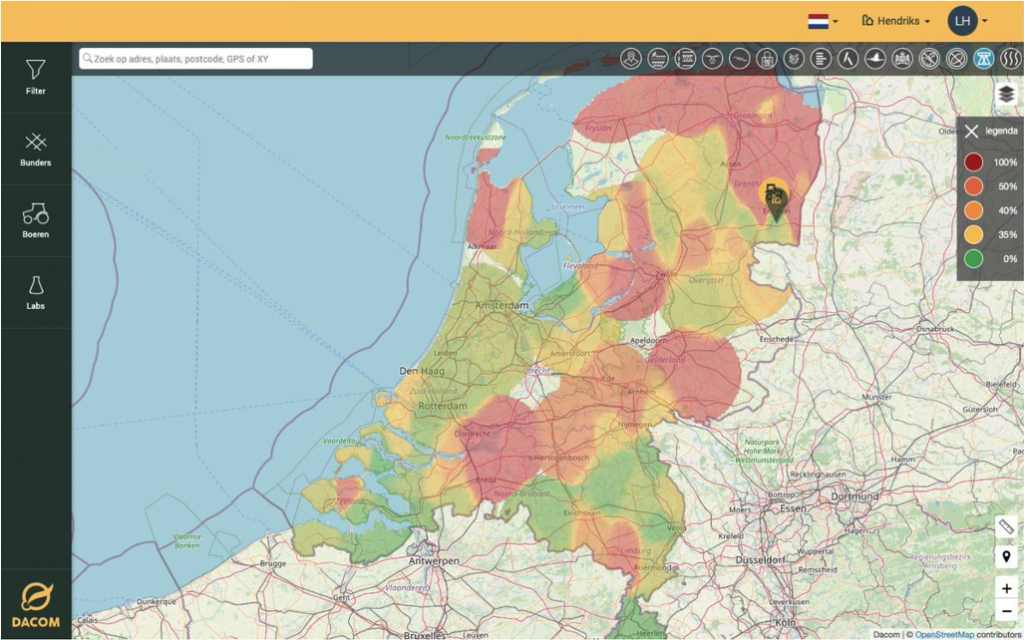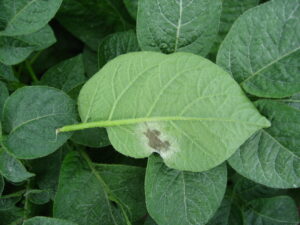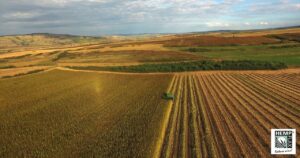Many growers apply their crop protection products according to a strict spraying schedule. However, it pays off to also consider the infection pressure. "This way, you can quickly save one or sometimes multiple sprays per year," says Gert Sterenborg, arable farmer and employee at Dacom. Dacom's infection radar provides a solution in this regard.
As an arable farmer, Gert Sterenborg knows all too well how handy it is to have insight into the infection pressure. "This allows you to better determine if your crops are adequately protected." The entrepreneur runs Maatschap Sterenborg-Kooij together with his parents and uncle in Onstwedde, Groningen. The arable and poultry farm grows, among other things, starch potatoes, sugar beets, grains, onions, and winter field beans.
In cultivation, the Disease Management module from Dacom is used. "With that, you get very specific advice for your plot on whether or not to spray," says Sterenborg. "That advice is based on crop growth, emergence date, and past sprays. It's very precise advice, but the downside is that as a grower, you have to input a lot of data. In that regard, the infection radar is a good alternative. It can be accessed via Boer&Bunder and is very easy to use. You can see across the Netherlands how high the expected infection pressure is."

The data that the infection radar is based on comes from the weather stations that Dacom has spread across the Netherlands. There are multiple weather stations per province covering an area with a radius of about 20 kilometers. The weather forecast also influences the infection radar. Sterenborg says, "For example, today the infection chances may be low throughout the Netherlands, but in two days there may be an increased chance of phytophthora infection in Zeeland. Then it is useful for growers and advisors in this region to assess the extent to which the crops are protected."
Sterenborg, himself the Product Owner of Dacom's advisory services, emphasizes that it's up to entrepreneurs themselves to draw conclusions. "The infection radar only indicates something about the conditions for fungi and other pests. It's not personalized advice. Other factors such as the field, planting or sowing date, crop growth, and previous sprayings are also important."
Favorable for the wallet
The infection radar is interesting for a wide range of crops, including sugar beets, potatoes, onions, chicory, and carrots. Each crop faces its own diseases and pests, so it's interesting to know how high the infection pressure is. "Sometimes you can postpone a spray. For example, if you follow a certain spraying schedule but see that the infection pressure will be low in the coming days. This is not only more sustainable but also favorable for the wallet."





